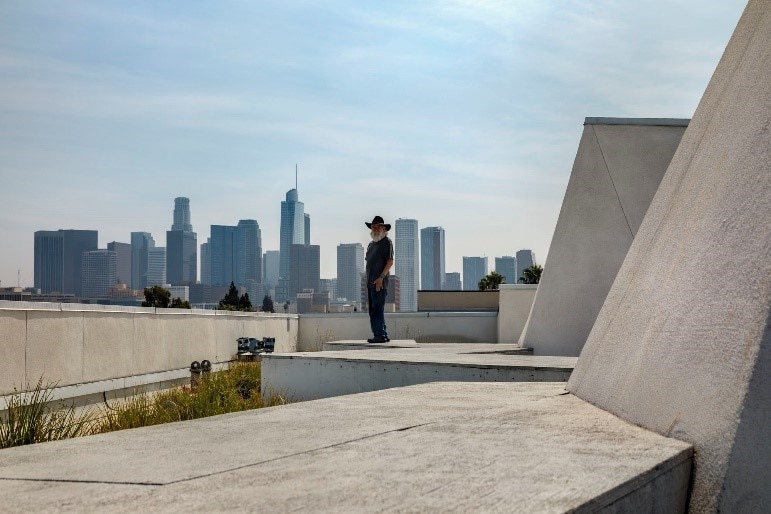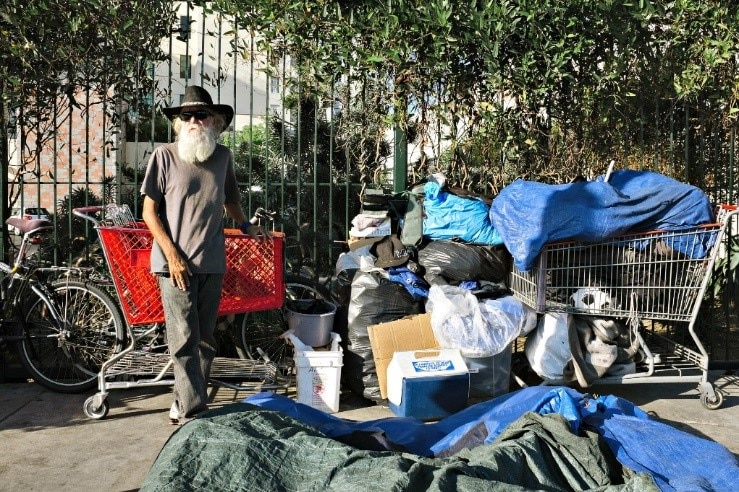How Partnerships Can End Veteran Homelessness
"Cowboy" (pictured above and below) is a U.S. Army Veteran who served in Vietnam, Grenada, Bosnia, Panama and Somalia and, until recently, was living in a tent on Skid Row in Los Angeles, an area known as an epicenter of homelessness. Anyone who meets Cowboy takes pause when thinking about how such a sweet-natured but confident man could serve so many tours, be so committed to his country, and yet end up homeless.
After serving several years in the military – and being told how every minute of his days would be structured – he returned to civilian life and quickly became unsettled by a lack of guidance or anyone to tell him what his next move would be. Feeling lost, Cowboy struggled with that transition, and never found his way back to a secure or settled life. Sadly, Cowboy is not alone in his plight.
A 2018 Point-in-Time count (a nationwide count of sheltered and unsheltered homeless persons conducted on a single night in January 2018) estimated that nearly 38,000 veterans are homeless in the U.S. on any given night. Many of them struggle with lingering trauma or suffer from a variety of physical and mental disabilities.
My organization, Skid Row Housing Trust, provides affordable, permanent supportive housing to people experiencing homelessness, who can then move off the streets and into a permanent home equipped with on-site support so they are empowered to break the cycle of homelessness for good. To provide this kind of inclusive and welcoming housing for veterans, we partner with organizations that share our goal of ending veteran homelessness, including Citi and LISC (Local Initiative Support Corporation).
Through the Bring Them HOMES initiative, led by LISC and its investment affiliate NEF (National Equity Fund) and supported by Citi Community Development, we've been able to help finance, facilitate, advocate for, and implement a range of affordable housing options for veterans. Thanks to them, the Trust was able to develop Cowboy's new home: The Six.
"Got your six" is a phrase used in the military to convey the message, "I've got your back." The Six apartments are meant to provide an equivalent level of safety, trust, and comradery. The facility has onsite supportive services, 24-hour property management, community rooms, and a spacious courtyard that offer peaceful respite and space for social gatherings.
Most importantly, it connects residents with case managers to navigate complex health and veterans benefits systems, workforce development, and access to volunteer opportunities to give residents a renewed sense of purpose. From peer support groups and movie nights to flower arranging classes, yoga, meditation and healthy eating classes, our residents also participate in a host of activities that support their well-being and reintegration into the community.
The building structure also plays a role in residents' progress. The architecture at The Six intentionally harnesses open air and natural light to support residents with PTSD and help people feel connected to the community.

Cowboy says it best, "When I saw this building, I said, this is the place I want to live in. Finally, I'm going to have a roof over my head - a solid roof, not a tent. I feel safe, I feel secure. This is where I want to be. This is where I want to stay."
Cowboy is also one of the faces of "Bring Them Homes: Photographs of Resilience", a 30-image exhibition by award-winning photographer Gus Powell that shines a light on the perseverance and dynamic stories of veterans that were once homeless or at risk of homelessness. The exhibit, which includes the photo above, has been on display at Citi's Long Island City and Tribeca offices and is traveling to Citi's Buffalo site next month.
Watch to learn more about Cowboy's journey: https://www.youtube.com/watch?v=GtTPinEgcUo
